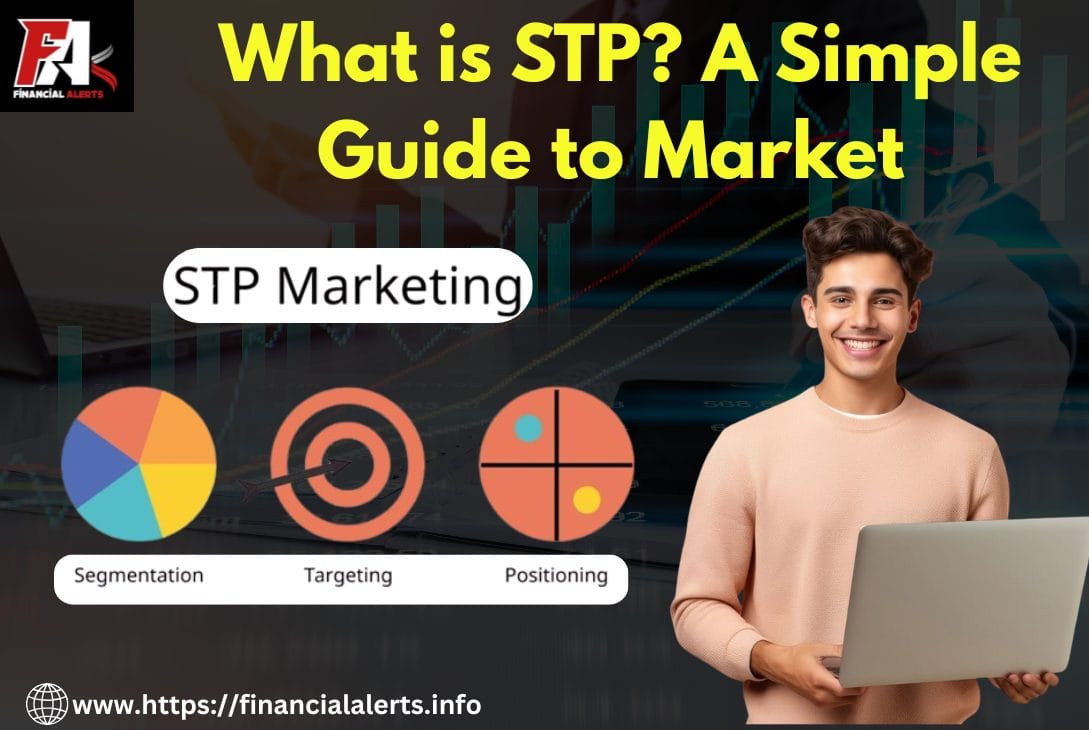Understanding your audience has become important in the world of digital marketing. STP (Segmentation or Targeting and Positioning) is useful in this situation. This blog contains answers to frequently asked questions like “What is STP in marketing?” and “How can I connect my product with the right audience?”
Let’s explore the foundations, real-world uses, and strategic advantages of STP, one of the most powerful frameworks for modern marketing.
What is STP?
Segmentation, Targeting, and Positioning is known as STP. Marketers use this three-step process to choose which market groups are the most valuable, target them smoothly, and develop positioning strategies that attract to each category.
It functions similarly to a marketing GPS. STP is the laser-focused hook that guarantees you aren’t waste resources, as instead of putting out a wide net and hope to catch some fish.
In short:
- Segmentation means dividing the market into different groups of people.
- Targeting – Select the segment(s) to focus on
- Positioning – Tailor your messaging to meet the needs of those segments
The Three Pillars of STP
1. Market Segmentation
Market segmentation is the process of breaking down a large market into smaller groups of customers that share wants or features. The idea is that you can customize your marketing and products to your clients’ unique demands by knowing who they are.
Popular segmentation variables include:
- Demographic (age, gender, income)
- Geographic (location, climate)
- Psychographic (lifestyle, values, personality)
- Behavioral (purchase habits, brand loyalty)
2. Targeting
After division is finished, targeting helps marketers by analyzing each segment’s potential and choosing one or more to target. You decide which target audiences best fit the value proposition of your brand.
Targeting strategies include:
- Undifferentiated targeting (mass marketing)
- Differentiated targeting (specific strategies for each segment)
- Concentrated targeting (focus on one niche)
- Micromarketing (customization for individuals)
Example: A skincare brand may target women aged 25–40 with sensitive skin using organic ingredients as their main appeal.
3. Positioning
Positioning is the way you want your product or brand to be seen by your target audience. It responds: What makes you better to the competition in the eyes of the customer?
Developing a Unique Selling Proposition (USP) and communicating it clearly and consistently via marketing channels are the key elements of positioning.
Tools to use in positioning:
- Perceptual maps
- Taglines/slogans
- Emotional branding
Example: Volvo presents itself as a safe and reliable car brand, which attracts families and careful drivers.
Why is STP Important?
STP enhances marketing efficiency or customer satisfaction and brand loyalty. In the age of personalization, where customers expect customized experiences, STP helps businesses deliver precisely that.
Key reasons why STP is important:
- Boosts ROI by targeting only high-value customers
- Helps develop focused messaging
- Reduces marketing waste
- Improves brand recall and market positioning
Real-World Examples of STP
Coca-Cola
- Segmentation: Age, lifestyle (athletes vs. casual drinkers)
- Targeting: Diet Coke for calorie-conscious; Coke Zero for men avoiding sugar
- Positioning: “Taste the Feeling” connects emotionally across segments
Nike
- Segmentation: Sports type, gender, skill level
- Targeting: Athletes, fitness enthusiasts, sneaker lovers
- Positioning: Empowerment and performance (“Just Do It”)
Airbnb
- Segmentation: Budget travelers, luxury seekers, adventure travelers
- Targeting: Millennials looking for unique, affordable experiences
- Positioning: “Belong Anywhere” emphasizes community and personalization
Benefits of Using the STP Model
- Personalized Campaigns
- Efficient Resource Allocation
- Better Product Development
- Higher Customer Retention
- Clear Brand Identity
Companies using STP properly often enjoy higher customer lifetime value (CLV) and stronger competitive advantage.
Common Mistakes to Avoid
Even the best frameworks fall flat when misused. Avoid these STP pitfalls:
- Choosing segments based only on size
- Over-segmenting the market (you’ll spread too thin)
- Lack of differentiation in positioning
- Ignoring market research
- Using outdated data for segmentation
How to Implement the STP Model
- Conduct Market Research
Use surveys, focus groups or CRM data and analytics tools. - Segment Your Market
Identify clear categories based on relevant criteria. - Evaluate Segment Attractiveness
Think about how big the group is, how fast it is growing, how much profit it can make, and how easy it is to reach. - Choose Your Target Segment(s)
Choose the ones that match your goals the most. - Define Your Positioning Strategy
Clarify your USP and develop a positioning statement. - Execute Your Marketing Mix
Match your product, price, place, and promotion to fit your plan.
FAQs About STP
Q1. What does STP stand for in marketing?
STP stands for Segmentation or Targeting and Positioning. It’s a framework used to identify and attract the right audience with tailored messaging.
Q2. Why is STP important in digital marketing?
STP is crucial in digital marketing because it ensures your content or ads and products resonate with a specific audience, increasing engagement and conversions.
Q3. How is STP different from traditional marketing?
Traditional marketing often uses a one-size-fits-all approach. STP breaks that by offering customized strategies for different customer groups, leading to more effective marketing.
Q4. Can small businesses use the STP model?
Absolutely! STP is not just for large corporations. Small businesses benefit greatly from STP as it helps them use limited resources wisely to gain maximum impact.
Q5. How do I start using STP?
Start with research and segmentation. Use data from tools like Google Analytics and surveys or customer feedback. Then, choose your target market and develop compelling brand messaging.
Conclusion: STP Is the Backbone of Smart Marketing
Understanding what is STP is goes beyond textbook theory—it’s a practical, data-driven approach to connecting with the right audience in a meaningful way. If you’re launching a startup, revamping your marketing strategy or simply looking to optimize campaigns, STP is a tool you can’t afford to ignore.

I am a digital marketing executive as well as content writer in the mutual funds related blogs. My goal is to provide simple, interesting and reliable information to readers through my articles so that they always stay updated with the world of mutual funds.




[…] म्यूचुअल फंड और शेयर बाजार दोनों के अपने-अपने फायदे और जोखिम हैं। यदि आप बिना ज्यादा रिस्क लिए निवेश करना चाहते हैं तो म्यूचुअल फंड बेहतर विकल्प है। वहीं, यदि आप रिस्क लेने को तैयार हैं और बाजार की समझ रखते हैं, तो शेयर बाजार में निवेश ज्यादा लाभदायक हो सकता है। […]
v9bg00
Thank you for your sharing. I am worried that I lack creative ideas. It is your article that makes me full of hope. Thank you. But, I have a question, can you help me?